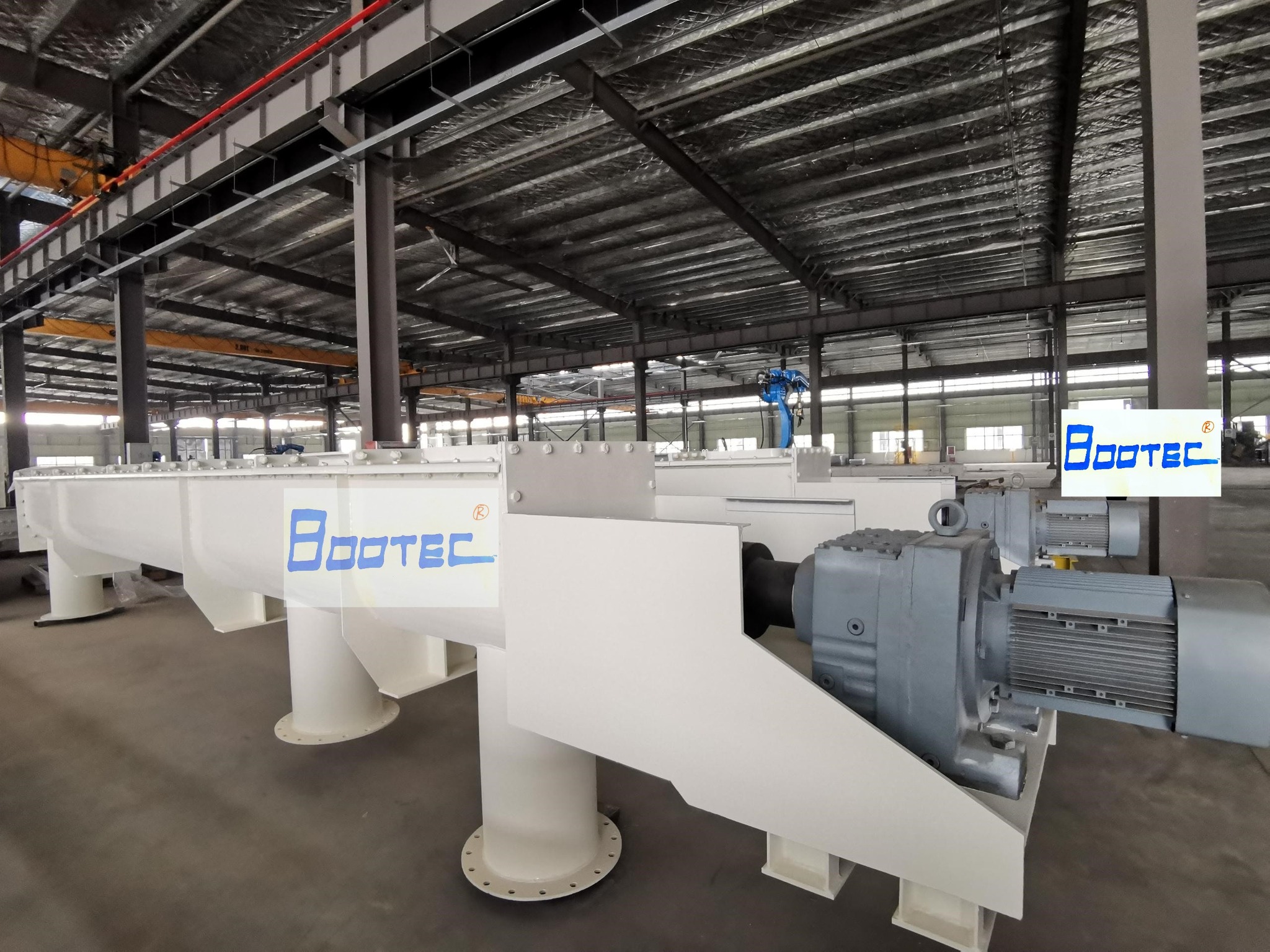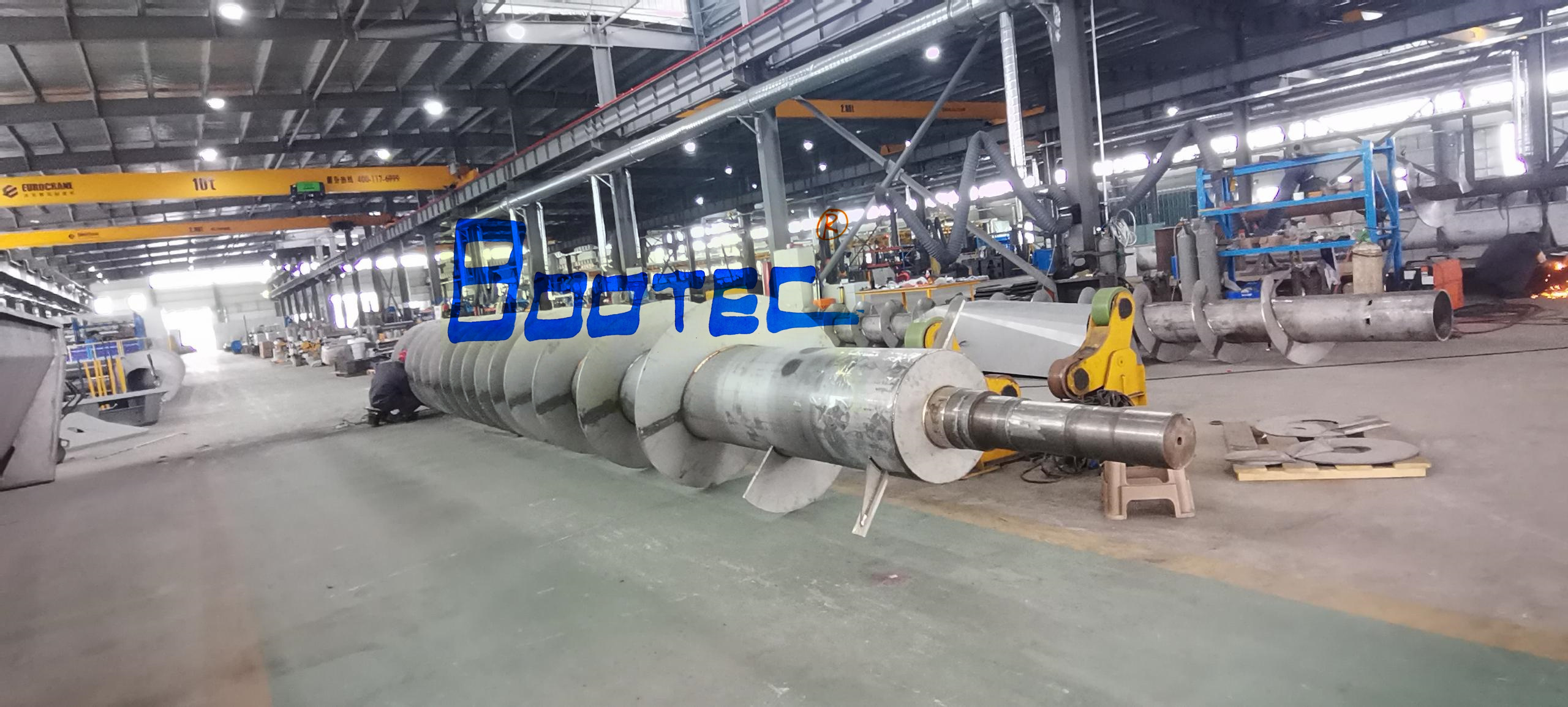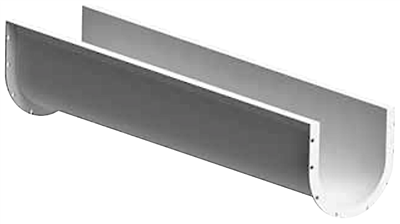
Direct reduction, hot briquetted iron plants conveyor
Direct reduction, hot briquetted iron plants conveyor
In Direct Reduction (DR) plants, particularly those involved in the production of Hot Briquetted Iron (HBI), conveyors play a critical role in handling and transporting the hot materials throughout the production process. Hot Briquetted Iron (HBI) is a form of Direct Reduced Iron (DRI) that is compacted into briquettes while still hot to facilitate easier handling and transportation, as well as to prevent oxidation.
Key Roles of Conveyors in DR and HBI Plants:
- Handling Hot DRI and HBI:
- High Temperature Handling: One of the major challenges in DR plants is the transportation of hot DRI (and eventually HBI). These materials can reach temperatures of 600°C to 1,000°C (1,112°F to 1,832°F), which requires specialized conveyors that can handle both the heat and the abrasive nature of the materials.
- Briquette Formation: After direct reduction, the DRI is often in a loose, sponge-like form and needs to be compacted into hot briquettes to facilitate easier handling and prevent oxidation. The conveyors in the briquetting section need to move both the hot DRI and the formed HBI efficiently.
- Types of Conveyors Used in Direct Reduction and HBI Plants:
- Submerged Chain Conveyors (SCC):
- Similar to what’s used in waste-to-energy plants for ash, the Submerged Chain Conveyor is often used in DR and HBI plants to transport hot DRI. The submerged design helps cool the material and suppresses dust while ensuring smooth and safe movement of hot materials.
- These conveyors typically feature heavy-duty chains and heat-resistant materials to withstand the extreme conditions.
- Belt Conveyors:
- Heat-Resistant Belts: Belt conveyors are commonly used to transport both DRI and HBI. The belts used in these conveyors are made of heat-resistant materials to handle the high temperatures of the material. They are designed to move the material from one stage of production to another, such as from the reduction furnace to the briquetting plant or from the briquetting plant to storage areas.
- Insulation and Cooling: In some systems, air or water cooling mechanisms may be incorporated to ensure that the temperature of the DRI or HBI stays within safe limits during transportation.
- Screw Conveyors:
- These can be used for moving DRI or HBI in controlled, confined spaces. Screw conveyors are effective when moving materials through smaller or more restricted areas of the plant and can handle both dry and semi-dry forms of DRI and HBI.
- Drag Chain Conveyors:
- Drag chain conveyors are used to handle heavy, hot, and abrasive materials, such as DRI, slag, and HBI. These conveyors are well-suited for conveying materials with higher bulk density or when the material is being moved over long distances or through tight spaces. The chains are designed to move materials along a trough, and they are often paired with cooling and dust suppression systems to ensure that the high temperatures are managed safely.
- Submerged Chain Conveyors (SCC):
- Key Considerations in Conveyor Design:
- Temperature Resistance: The conveyors in DR and HBI plants must be made of materials capable of withstanding the high temperatures of DRI (up to 1,000°C). Steel alloys, stainless steel, and specially designed heat-resistant materials are typically used for the chains, belts, and other moving components.
- Dust Control: DRI and HBI can generate fine dust, which can be hazardous both from a safety and environmental perspective. Conveyors are typically equipped with dust suppression systems (such as water sprays, air curtains, or enclosed conveyor systems) to minimize dust emissions.
- Abrasion Resistance: Due to the abrasive nature of DRI and HBI, the conveyors need to be constructed with components that can handle wear and tear over time. Using hard-wearing materials for chains, belts, and liners is essential to prolonging the lifespan of the system.
- Energy Efficiency: As DRI and HBI transportation can be part of a continuous process, energy-efficient motors and drive systems are important for keeping operating costs low. Additionally, the systems may be designed with variable-speed drives to optimize material flow.
- Cooling and Maintenance:
- Cooling Systems: To handle the hot materials safely, cooling systems may be integrated into the conveyor design. For example, submerged chain conveyors (SCC) are often used in a cooling bath, or air or water cooling systems can be added to conveyor belts to reduce material temperatures before reaching critical equipment or storage areas.
- Preventing Oxidation: Because DRI and HBI are susceptible to oxidation when exposed to oxygen at high temperatures, special care must be taken to minimize exposure to air. Some conveyors are designed with sealed covers or enclosed paths to reduce oxidation and ensure the material maintains its quality.
- Maintenance: Regular maintenance of conveyors is critical to ensuring smooth operation in a DR or HBI plant. This includes monitoring the condition of the belts, chains, and sprockets, checking for wear and tear, and replacing worn-out parts as needed. Maintenance is especially crucial when dealing with hot and abrasive materials to prevent breakdowns and ensure safety.
- Applications in Direct Reduction and HBI Plants:
- Reduction Furnace to Briquetting Press: After the direct reduction of iron ore, the hot DRI needs to be moved from the furnace to the briquetting press. This process typically involves conveyor systems that are designed to handle high temperatures and efficiently move the material to the next step.
- Briquette Handling: After the HBI is formed, it needs to be transported to cooling areas or storage. Conveyor systems are used to move the hot briquettes while maintaining control over temperature and preventing damage to the briquettes.
- Storage and Dispatch: Finally, conveyors are used to move cooled HBI to storage or shipping areas where it can be loaded into containers or trucks for delivery to steel mills or other facilities.
- Safety Features:
- Temperature Monitoring: Temperature sensors are critical to ensure that the material remains within safe operational limits during transportation. Conveyor systems are often equipped with real-time temperature monitoring to adjust the operation if needed.
- Fire Protection: Given the hot nature of the materials being handled, fire suppression systems, such as sprinklers or fire extinguishing systems, are often integrated into conveyor systems to prevent fire hazards.
- Dust and Fume Extraction: Dust extraction systems are used to prevent the accumulation of hazardous dust and fumes in the plant, ensuring that the working environment is safe and compliant with environmental regulations.
Conclusion:
Conveyors in Direct Reduction and Hot Briquetted Iron (HBI) plants are essential for the efficient transportation of hot and abrasive materials, ensuring smooth transitions from reduction furnaces to briquetting presses and then to cooling and storage areas. The conveyors are designed to handle high temperatures, reduce oxidation, control dust emissions, and prevent material degradation. Their maintenance and design are critical to the efficiency and safety of the entire production process.




